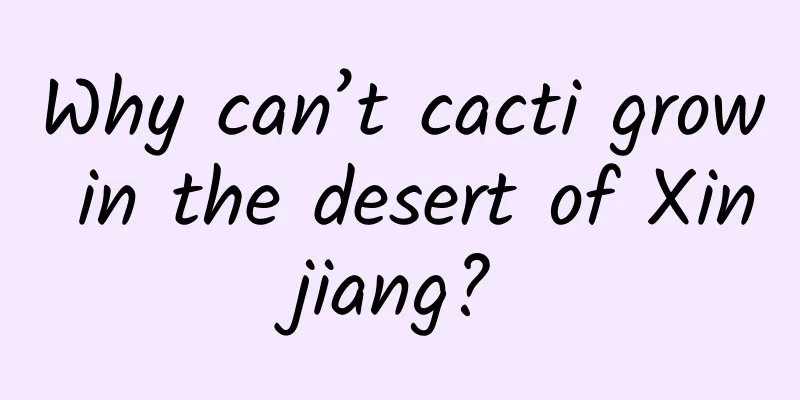Both the leaves and fruits are yellow, so why is it called “Ginkgo”?

|
Produced by: Science Popularization China Author: Shi Chang (PhD in Physical Chemistry) Producer: China Science Expo Ginkgo, a living fossil that has survived on Earth for hundreds of millions of years, has become a symbol of autumn with its unique fan-shaped leaves and yellow fruits. However, when we admire these golden fruits, are we curious about why this tree is named "silver"? From spring to winter, from green to yellow, the ginkgo tree has never shown silver. Is its name a "bug?" Ginkgo Avenue (Photo source: veer photo gallery) Ginkgo, amazing vitality Ginkgo trees belong to the Ginkgoaceae family and are a type of deciduous tree. Their earliest appearance can be traced back to the Carboniferous period 345 million years ago. Since then, due to climate and environmental changes and the replacement of angiosperms, ginkgo plants have become extinct in most parts of the world. Today's ginkgo trees are the only species of ancient ginkgo plants that survive on Earth, and are known as the "world's first living fossil" and the "giant panda of the plant world." Ginkgo trees are very strong. According to records, the ancient ginkgo tree in Lijiawan, Guizhou, China is more than 5,000 years old and about 50 meters tall. After being struck by lightning and burned many times, it still has vitality. Ginkgo trees are not only strong in vitality, but also resistant to radiation. Ancient Ginkgo Tree (Photo source: veer photo gallery) In the atomic bomb explosion in Hiroshima, Japan in 1945, almost all living things in the nuclear explosion area were destroyed, but the ginkgo trees miraculously survived. The following year, the surviving ginkgo trees even sprouted new buds. Among these surviving ginkgo trees, the closest one was only 1,000 meters away from the center of the nuclear explosion, and none of them showed major deformities. Why are ginkgo trees so tenacious? In 2020, the scientific research team of Yangzhou University and Beijing Forestry University selected the vascular cambium of the trunks of ancient ginkgo trees ranging from more than ten to more than a thousand years old as the main research material, and comprehensively used multidisciplinary identification methods such as cytology, physiology, multi-omics and molecular biology to reveal the longevity mechanism of ginkgo trees. Vascular cambium generally refers to a meristem in the stems and roots of gymnosperms and dicotyledons. The division of cells in this tissue can continuously produce new xylem and phloem, thereby thickening the stems and roots. In addition, the activity of the cambium tissue is usually related to the age of the tree. Changes in growth rate, aging symptoms and resistance of ginkgo trees with age (Image source: Reference 1) The research results show that the longevity of ancient ginkgo trees is mainly reflected in their unique anti-aging mechanism and strong ability to resist "external threats". The vascular cambium cells of ginkgo trees have the ability to divide continuously, which to a certain extent avoids the decline of various plant functions caused by cell aging, thus "keeping them young forever". In addition, ancient ginkgo trees have the ability to continuously synthesize lignin, thereby continuously increasing the density and strength of the trunk. At the same time, they improve their own resistance by continuously expressing R genes (plant resistance genes that improve the ability of plants to resist diseases and pests) and accumulating metabolites with special protective functions. Why does Ginkgo contain the word “silver”? Li Shizhen of the Ming Dynasty described ginkgo in his Compendium of Materia Medica as follows: "It is native to the south of the Yangtze River, and its leaves resemble duck feet, hence the name Duck Feet. It was introduced as a tribute in the early Song Dynasty, and was renamed ginkgo because it looks like a small apricot and its core is white, and is now called ginkgo nut." Ginkgo fruit is commonly known as ginkgo nut, and its shape is very similar to apricot fruit. The outer skin of ginkgo fruit has white powder, and it will glow slightly silver under sunlight. This shows that the "silver" in ginkgo has a lot to do with its fruit. Ginkgo leaves and gingko berries (Photo source: veer photo gallery) The "silver" in Ginkgo is related to the color of the fruit, and may also be related to its state in water. If you pick up a Ginkgo fruit and slowly immerse it in water, you will understand the origin of the word "silver". After the Ginkgo fruit is immersed in water, there will be a layer of silver on its surface, just like being brushed with a layer of silver powder, but it disappears when it is taken out of the water. "Silver" dew on leaves (Photo source: veer photo gallery) This is because when the ginkgo fruit is immersed in water, a layer of water film will form on the surface under the action of hydrophobic substances (pectin and wax). The hairs or protrusions on the surface of the ginkgo fruit will retain some air. When light enters the air (small refractive index) from water (large refractive index), total reflection is very likely to occur, giving the ginkgo fruit a unique silver luster. Why do you smell a stinky smell when you appreciate ginkgo leaves? Ginkgo nuts are related to the origin of the name of Ginkgo, but they are also the "culprit" of the odor. The odor of Ginkgo nuts is particularly obvious when the fruit is ripe. The outer seed coat of Ginkgo nuts contains a variety of organic acids, including butyric acid and caproic acid. These fatty acids will gradually be oxidized and decomposed when the fruit is ripe, and produce volatile substances with odor, thus emitting a stench like fat deterioration or rotten fruit. Ginkgo nuts gradually rot (Photo source: veer photo gallery) The bad smell we think of may be the "self-protection mechanism" of ginkgo. Ginkgo trees are dioecious plants. Male plants only bloom but do not bear fruit, while female plants can bear fruit. Fruits, or seeds, are one of the ways for ginkgo to reproduce. The bad smell emitted by ripe fruits can prevent animals from eating them, thereby enhancing their reproductive capacity. From this perspective, if you don't like the smell of ginkgo, you can also consider planting male plants. The stinky ginkgo nut is actually a "treasure" Ginkgo nuts are rich in protein, vitamins and minerals, with high levels of vitamin E and flavonoids. Vitamin E can strengthen the immune system and improve the body's antioxidant capacity. Flavonoids such as ginkgo biflavonoids and isoginkgetin have the effects of improving blood circulation, enhancing memory, anti-aging, anti-tumor, and anti-virus. Ginkgo Nuts (Photo source: veer photo gallery) There are many ways to eat ginkgo nuts. Ginkgo nuts can be used in stewing soup, cooking porridge or as other cooking ingredients, such as ginkgo nut cake, ginkgo nut ice cream, ginkgo nut yogurt, etc. It should be noted that ginkgo nuts contain trace amounts of hydrocyanic acid toxins . If eaten improperly or taken too much at one time, it may have adverse effects on the body, causing symptoms such as nausea, vomiting, and difficulty breathing. In addition, the outer seed coat of ginkgo nuts also contains irritating toxins. These toxins invade the skin and may cause skin redness, itching, and rashes, thereby causing contact dermatitis, and in severe cases, infection. Therefore, although "gingko nuts" are good, don't be greedy. Conclusion Ginkgo is loved by people for its golden leaves and nutritious fruits. The name of the Ginkgo tree not only reflects its appearance, but also has scientific connotations. Let us observe the world with a scientific perspective and a curious attitude, and discover the potential beauty of nature. References: 1.Wang L, Cui J, Jin B, et al. Multifeature analyzes of vascular cambial cells reveal longevity mechanisms in old Ginkgo biloba trees[J]. Proceedings of the National Academy of Sciences, 2020. 2.Wang X, Liu XJ, Xing SY, et al. AFLP analysis of genetic diversity and a construction of the core collection of partial ancient ginkgo trees in China[J]. Acta Horticulturae Sinica, 2016. 3. Yang Qiang, Li Xinhua, Zhang Zhen, et al. Hypolipidemic effect of Ginkgo biloba polysaccharide[J]. Food and Fermentation Industries, 2013. 4. Chen Xiangming, Dai Xianping, Dong Xiuli. Determination of organic acids in ginkgo fruit by HPLC[J]. Journal of Analytical Science, 2011. |
<<: He weaves a space computing network by the Zhijiang River
>>: Why do people always say "exercise for 30 minutes"? Is 29 minutes enough?
Recommend
Is the sudden increase in white hair a sign of aging? Pay attention! It may be due to the lack of these 4 nutrients
Reviewer of this article: Zhou Xiaobo, Doctor of ...
2018 Tik Tok Research Report! (Full version)
“5 minutes on TikTok is like 1 hour in the real w...
Why are there more and more popular apps, but their popularity is getting shorter and shorter?
Changba, Moman Camera, Crazy Guess Picture, Face ...
I have summarized 2 experiences from the "Limited Free Class" fission activity
Event Background During this year's Spring Fe...
A magical journey: Oil's autobiography, My legend part 2
Ancient life came from the vast ocean and returne...
The harvest never forgets the breeders! Today, I want to tell you their story of "chasing light"
...
From the laboratory to commercialization, is the era of humanoid robots really coming?
Recently, there has been a lot of discussion abou...
"I hope you are well, but I don't want you to be too well", why do we envy others?
It seems that we are always comparing ourselves w...
Traffic acquisition methodology!
I would like to share some experience in traffic ...
Let’s go! Let’s eat Sichuan cuisine
Sichuan There are countless mountain valleys Ther...
[Beautiful article] This is how the first batch of users of Didi, Momo, and Meituan came from!
How did those awesome Internet companies promote ...
Apple loosens hardware specifications and opens Lightning interface to third parties
Lightning interface is Apple's proprietary te...
The underlying logic of hot products and traffic
There are three characteristics of explosive prod...
A review of the top ten public relations crisis events in 2018 (Part 2)
The second part of the top ten crisis public rela...
After years of tangerine peels, they finally became tangerine peels
It's the season for oranges again, and friend...






![2022 Virtual Project Practical Guide, How to Build a Store with a Monthly Income of Ten Thousand Yuan from Scratch for Beginners [Video Course]](/upload/images/67cc16787e9ed.webp)


